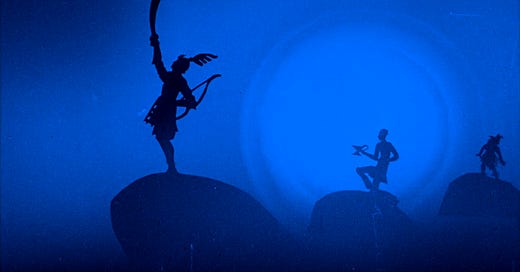Lotte Reiniger is one of the most important animators ever to live. She’s in that group of early masters — she made her first short film in 1919. Born in Berlin, she was active in Weimar Germany, collaborating with directors like Fritz Lang. Her own hour-long Adventures of Prince Achmed (1926) is the earliest surviving animated feature.
That makes Reiniger an impressive-sounding figure, but also a distant-feeling one. Many people don’t watch animation from the ‘20s anymore — let alone animation made before Steamboat Willie (1928). Yet that isn’t fair to Reiniger, for two reasons.
The first is that she isn’t strictly tied to early animation. She continued to work, and to stay relevant, into the 1980s. Reiniger moved to Britain in the ‘40s and became a respected artist there, and later animated for the National Film Board of Canada. The second reason is that Reiniger’s art is timeless. She made her first film with stop-motion silhouette cutouts and never gave them up. As she said in the ‘70s:
I’ve tried to perfect, and I’ve tried to get better and better in my movement. And it came easier to me, you see; I had to learn it. But I still don’t think I have reached the point of complete perfection. After each film, I think, “Hm.”1
Even in the ‘20s and ‘30s, Reiniger was chasing what stop-motion animators chase today: memorable and evocative scenes, compelling movement, character. When you watch restored versions of Reiniger’s early work, some of which The Criterion Channel is streaming right now, it’s clear that these aren’t historical curiosities. She didn’t just get there first — she still stands among the best.
Keep reading with a 7-day free trial
Subscribe to Animation Obsessive to keep reading this post and get 7 days of free access to the full post archives.




